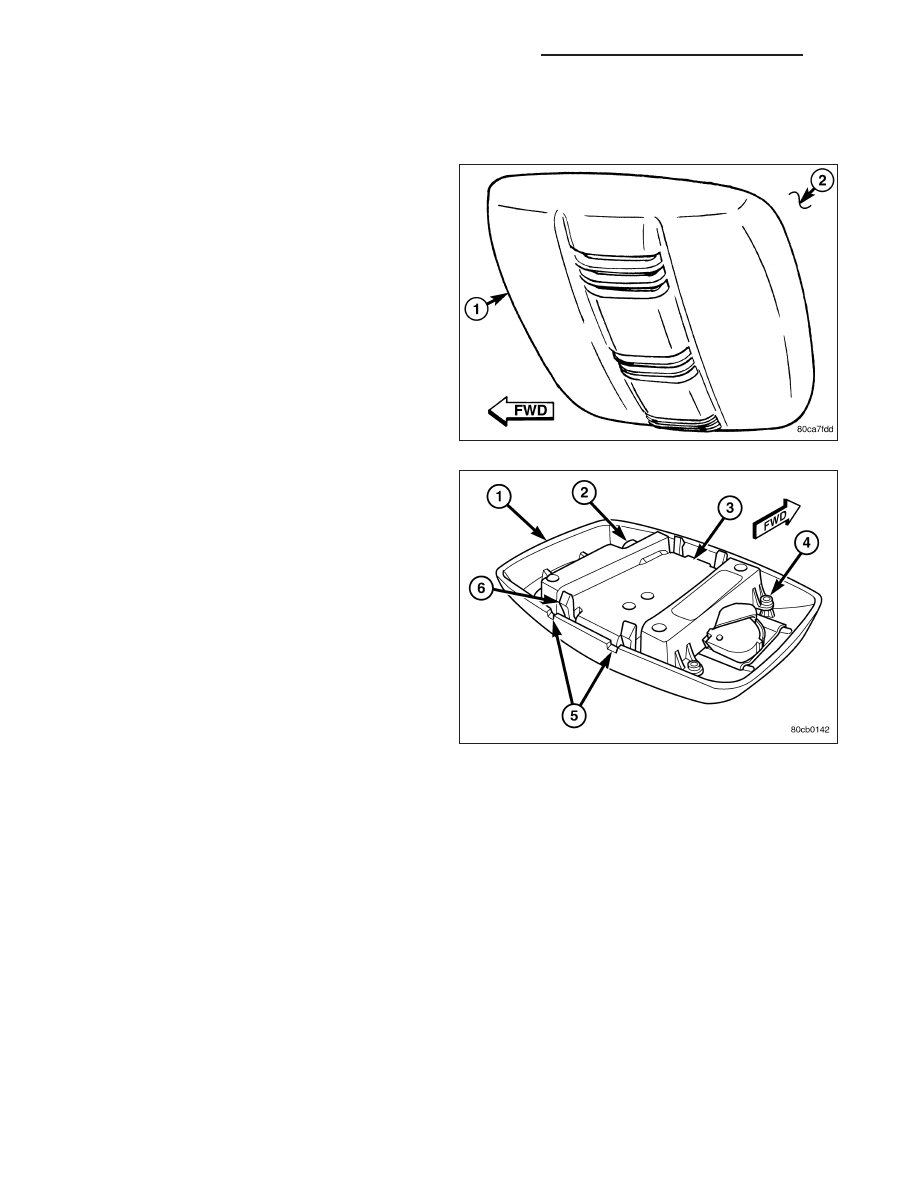Jeep Liberty KJ. Manual - part 275

UK SECURITY SYSTEM MODULE
DESCRIPTION
An Intrusion Transceiver Module (ITM) (1) is part of
the export premium version of the Vehicle Theft Alarm
(VTA) in the Vehicle Theft Security System (VTSS).
The export premium version of the VTA is only avail-
able in vehicles built for certain export markets, where
the additional features offered by this system are
required. The ITM is located in the passenger com-
partment, on the lower surface of the headliner (2)
near the center of the vehicle. This component is
designed to provide interior motion detection, and
serve as an interface between the Body Control Mod-
ule (BCM) and the alarm siren module.
The ITM is concealed beneath a molded plastic trim
cover (1) that approximates the size and shape of a
typical dome lamp housing. Rather than a lens, the
trim cover features three sets of louvered openings.
Each of the louvered openings is covered on the
inside by a single molded black plastic sight shield
that extends the length of the center rib for appear-
ance. The entire module is secured to a molded plas-
tic mounting bracket above the headliner. Besides the
ITM, the trim cover also conceals two plastic pins inte-
gral to the mounting bracket that are used to secure
the bracket to the headliner with two stamped nuts
that are installed from below. An adhesive-backed
foam pad is installed above the ITM bracket between
the headliner and the roof panel to provide additional
headliner stabilization and support for the ITM mount-
ing. Two small notch-like service holes (5) on the rear
edge of the trim cover afford access to the two integral rear latches (6) of the ITM housing (3) for service removal.
Concealed within the housing is the electronic circuitry of the ITM which includes a microprocessor, and an ultra-
sonic receive transducer. A molded plastic connector receptacle (2) containing six terminal pins that is soldered to a
small circuit board and extends through a clearance hole in the left front corner of the ITM housing, and an ultra-
sonic transmit transducer housing extends from the center of the right side of the ITM housing. Both the transmit
transducer on the right side of the module and the receive transducer on the ITM circuit board are aimed through
two small round holes in the sight shield of the trim cover. The ITM is connected to the vehicle electrical system by
a wire harness that is integral to the headliner.
The ITM unit cannot be adjusted or repaired and, if inoperative or damaged, it must be replaced.
OPERATION
The microprocessor in the Intrusion Transceiver Module (ITM) contains the motion sensor logic circuits and controls
all of the features of the export premium version of the Vehicle Theft Alarm (VTA). The ITM uses On-Board Diag-
nostics (OBD) and can communicate with other electronic modules in the vehicle as well as with a diagnostic scan
tool using the Programmable Communications Interface (PCI) data bus network. This method of communication is
used by the ITM to communicate with the Body Control Module (BCM) and for diagnosis and testing through the
16-way data link connector located on the driver side lower edge of the instrument panel. The ITM also communi-
cates with the alarm siren module over a dedicated serial bus circuit.
The ITM microprocessor continuously monitors inputs from its on-board motion sensor circuitry as well as inputs
from the BCM and the alarm siren module. The on-board ITM motion sensor circuitry transmits ultrasonic signals
8Q - 76
VEHICLE THEFT SECURITY - SERVICE INFORMATION
KJ